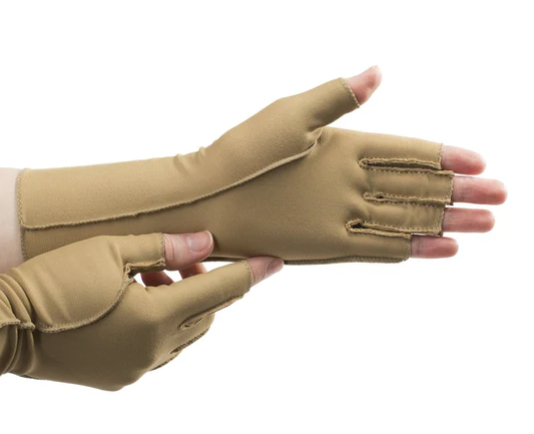Case Studies – Protac Ball Blanket
ADHD
A 10-year-old girl with Attention Deficit Hyperactivity Disorder (ADHD) and Sensory Processing Disorder is extremely physically active. She suffers from tactile defensiveness, which makes her feel very uncomfortable wearing clothes. She also finds it difficult to be in close physical contact with other people, and she sleeps badly at night. She is given a Protac Ball Blanket™ and lies down underneath it when she feels that she needs calming down. She starts sleeping underneath the blanket at night, and now sleeps more soundly, and she has more energy the following day. The blanket has also meant that her tactile defensiveness has diminished, so that she is now able to wear long-sleeved tops without feeling uncomfortable.
Autism
A young woman with autism and intellectual impairment is very selfdestructive and has difficulties sleeping. The staff wrap her duvet tightly around her and sit with her, holding her hand, until she falls asleep. Nevertheless, her sleep is disturbed and interrupted. After she was given a Protac Ball Blanket™, she is happy to go to bed, and it helps her to stay there. Moreover, she is not as self-destructive as before.
Dementia
An elderly man with dementia has become increasingly anxious over the last year, leading to more aggressive behaviour. The man resists being transferred, cared for or bathed. The staff feel they have to overstep the mark in how they handle him whenever he needs to be transferred or bathed. He is given a Protac Ball Blanket™ and immediately enjoys it. He objects when the night nurse tries to replace it with his normal duvet in the early hours of the morning, so he is allowed to sleep through the night with the blanket. After two or three weeks, the staff comment that he has become a completely different person. Transfers and bathing no longer give rise to aggressive behaviour. He has started to sing and take a look at the newspapers, and after two months he stood up from his wheelchair several times and walked, something he had not done for a long time.
Neurological disorders
A young man is brain-damaged following a traffic accident. He is restless, and has a very poor sense of his own body and how to use it. The Protac Ball Blanket™ helps him to calm down and get some sleep and sufficient energy to apply himself to his rehabilitation.
Mental disorders
A psychiatric department reports: “The Protac Ball Blanket™ is used almost daily in our department. The patients find it easier for them to ‘sense themselves’, they are less anxious, less aggressive, and thus feel a greater sense of security. Using the blanket also means that we use fewer sedatives and less physical restraint. We find that the blanket prevents and limits aggressive and destructive behaviour. Many patients ask for a Protac Ball Blanket™ themselves when they need one, and it thus allows them to help themselves.”
Pain
A woman tells her story: “I have been diagnosed with fibromyalgia, and have now borrowed a Protac Ball Blanket™ from the hospital. I use it when I feel my body is almost at breaking point with pain. It is good to have it placed on top of you because it feels as though it holds your body together. It keeps your muscles warm, and has a relaxing effect. I also use it on the floor, where I roll myself up in it or use it as a mattress for lying on. When I’m sitting in a chair with the blanket wrapped tightly around me, it is a good position for reading as I’m able to rest my arms on the blanket.”
Developmental disorders
A woman with a developmental disorder has great difficulties talking and has only limited sign language. Her mental state fluctuates greatly. On bad days, she reacts very aggressively to both co-residents and staff if she is not understood or does not receive enough attention. She finds it difficult to ‘calm down’ again after such violent reactions, and has previously been given strong sedatives. She is introduced to the Protac Ball Blanket™ in connection with ‘play and cosy sessions’ in her bed, which is a favourite place for her to be. Now, in most cases, it is possible to offer her the blanket instead of medicine, and she becomes quiescent. After a time, she started sleeping with the blanket every night, and asked for it if it was not already on her bed.
Sleep disorders
A 38-year-old man with sleep disorders: “I have always slept very lightly – I usually wake up immediately if one of our three children even thinks about sticking their toes out from under the duvet at night. However, with the Protac Ball Blanket™, I wake up no more than once or twice and can easily get back to sleep. Previously, it could easily take me up to half an hour to an hour going back to sleep. But that’ no longer the case. I snuggle under the blanket and I’m out like a light. My wife says that I’m definitely more lively and cheerful, and that’s even though I spend at least an hour less in bed every night. After the first few nights under the blanket, I was actually quite alarmed by how soundly and well I had slept. I had never thought that it was possible. During periods when I have a lot going on and I’m walking a fine line between healthy and unhealthy stress, I still sleep far better with my ball blanket. In the past, it would have meant more disturbed and very little sleep. I find it all rather inexplicable, but I’m incredibly happy that I had the opportunity to try the Protac Ball Blanket™.”
A 31-year-old woman: “After a period of almost two years with very little sleep, I was desperate to find a remedy. I had tried sleeping on the floor in the bathroom, on the sofa, facing the opposite direction in bed, with and without pillows, not to mention meditation, listening to hypnotherapy for insomnia CDs, going to bed early, eating valeriana and drinking soothing teas. But to no avail. I was unable to settle at night, both in my body and mind. Then, I tried a Protac Ball Blanket, and that helped! The blanket sat heavily on my body, and made me calm down. It was a step in the right direction. Now I sleep again at night. Sometimes with the blanket. And sometimes without.”

